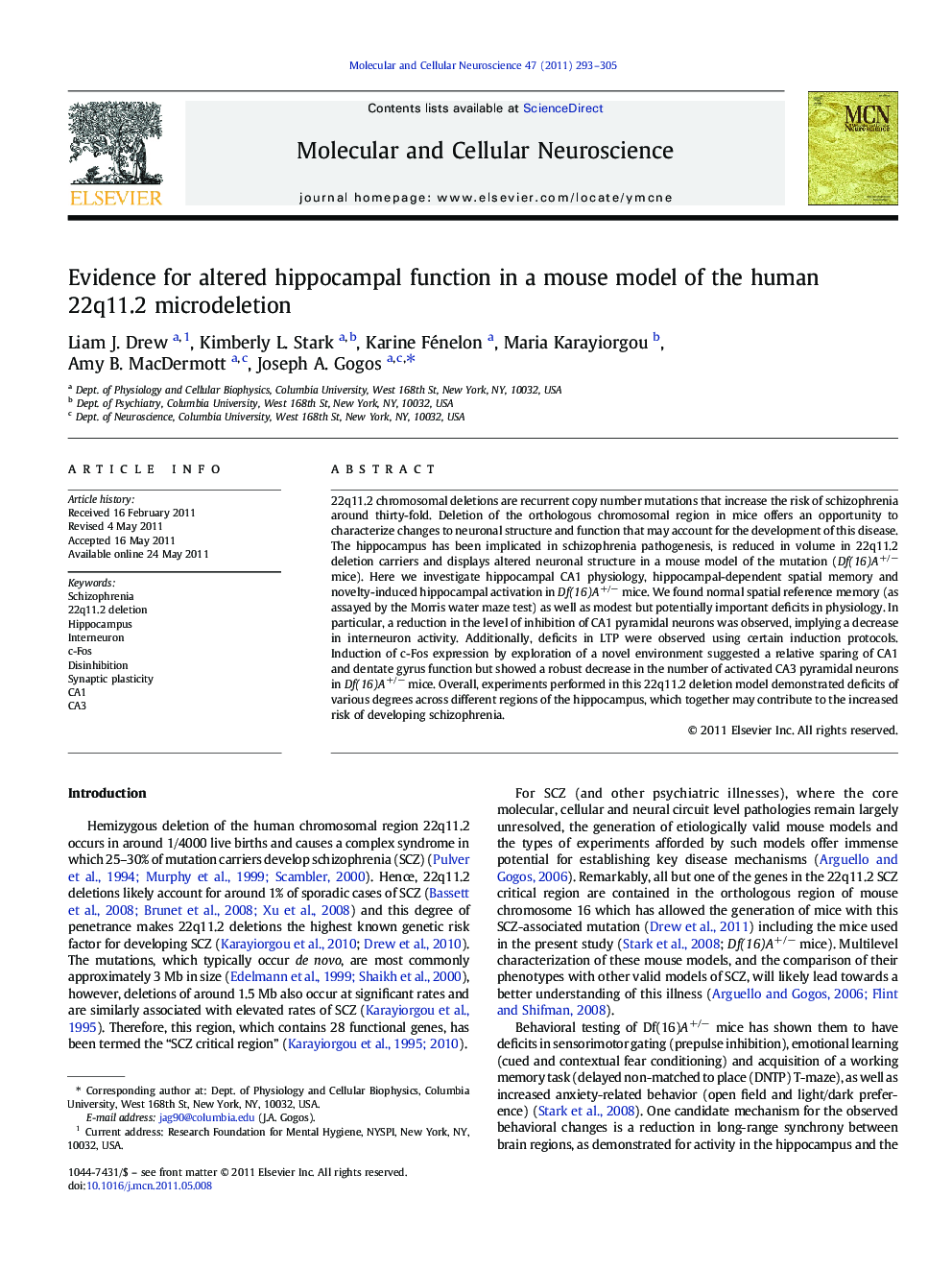| Article ID | Journal | Published Year | Pages | File Type |
|---|---|---|---|---|
| 2198641 | Molecular and Cellular Neuroscience | 2011 | 13 Pages |
22q11.2 chromosomal deletions are recurrent copy number mutations that increase the risk of schizophrenia around thirty-fold. Deletion of the orthologous chromosomal region in mice offers an opportunity to characterize changes to neuronal structure and function that may account for the development of this disease. The hippocampus has been implicated in schizophrenia pathogenesis, is reduced in volume in 22q11.2 deletion carriers and displays altered neuronal structure in a mouse model of the mutation (Df(16)A+/− mice). Here we investigate hippocampal CA1 physiology, hippocampal-dependent spatial memory and novelty-induced hippocampal activation in Df(16)A+/− mice. We found normal spatial reference memory (as assayed by the Morris water maze test) as well as modest but potentially important deficits in physiology. In particular, a reduction in the level of inhibition of CA1 pyramidal neurons was observed, implying a decrease in interneuron activity. Additionally, deficits in LTP were observed using certain induction protocols. Induction of c-Fos expression by exploration of a novel environment suggested a relative sparing of CA1 and dentate gyrus function but showed a robust decrease in the number of activated CA3 pyramidal neurons in Df(16)A+/− mice. Overall, experiments performed in this 22q11.2 deletion model demonstrated deficits of various degrees across different regions of the hippocampus, which together may contribute to the increased risk of developing schizophrenia.
